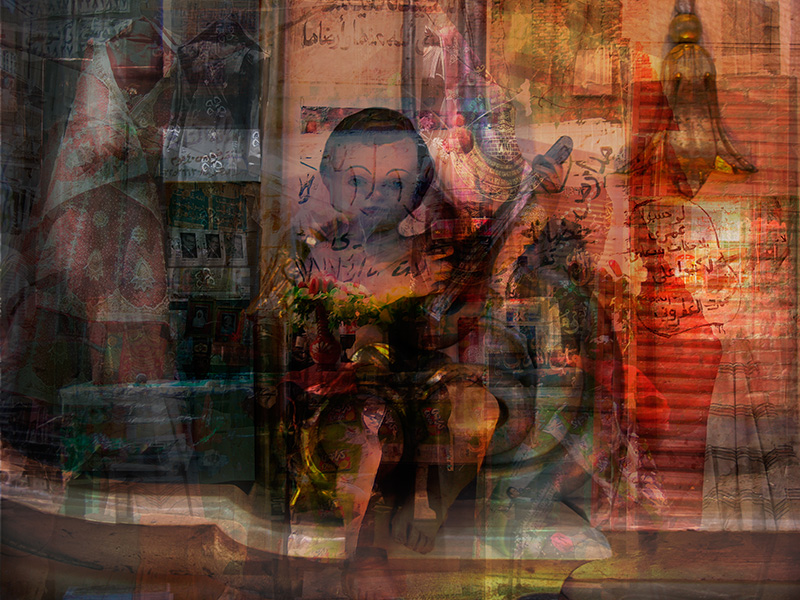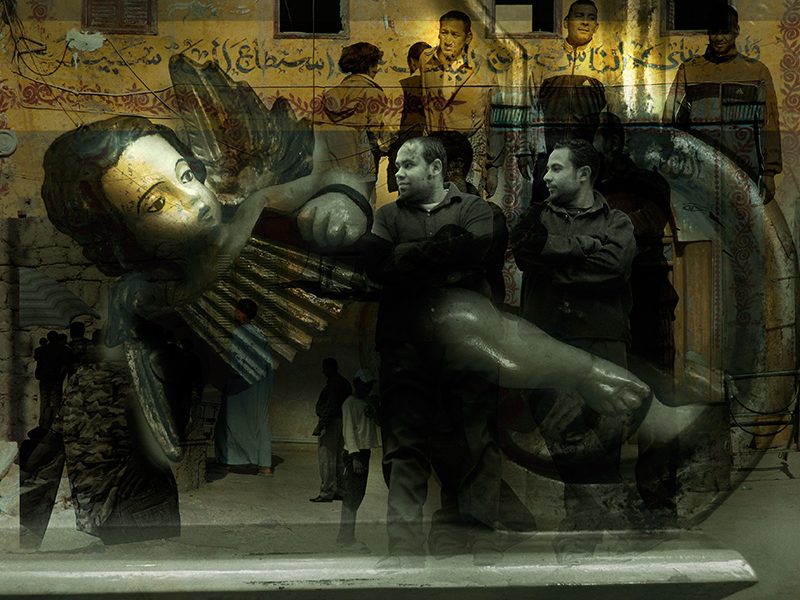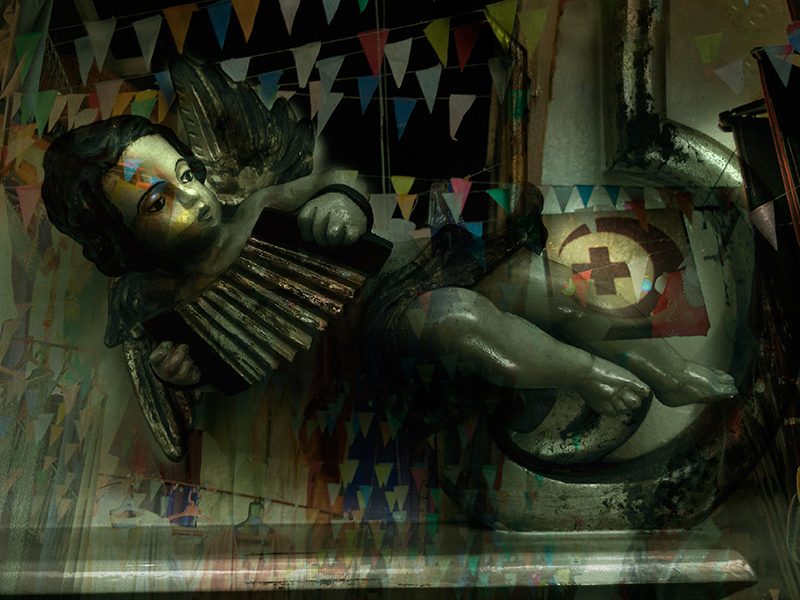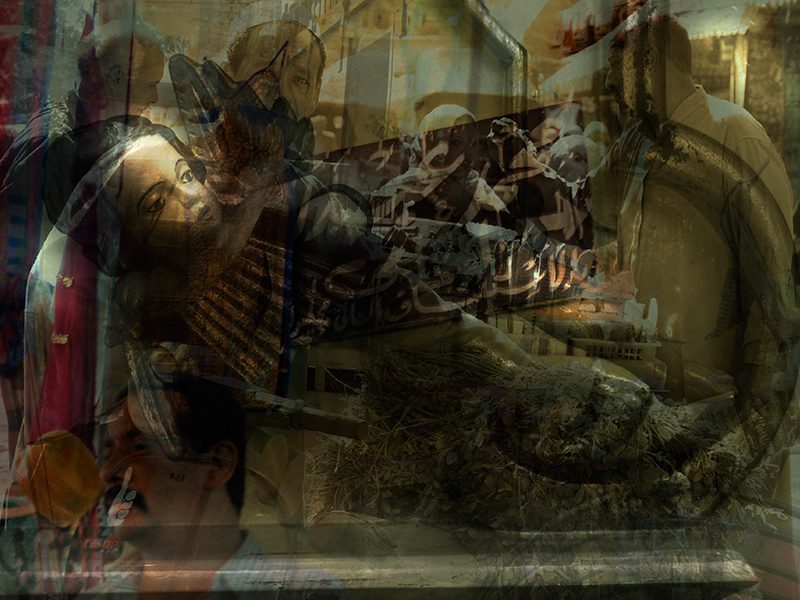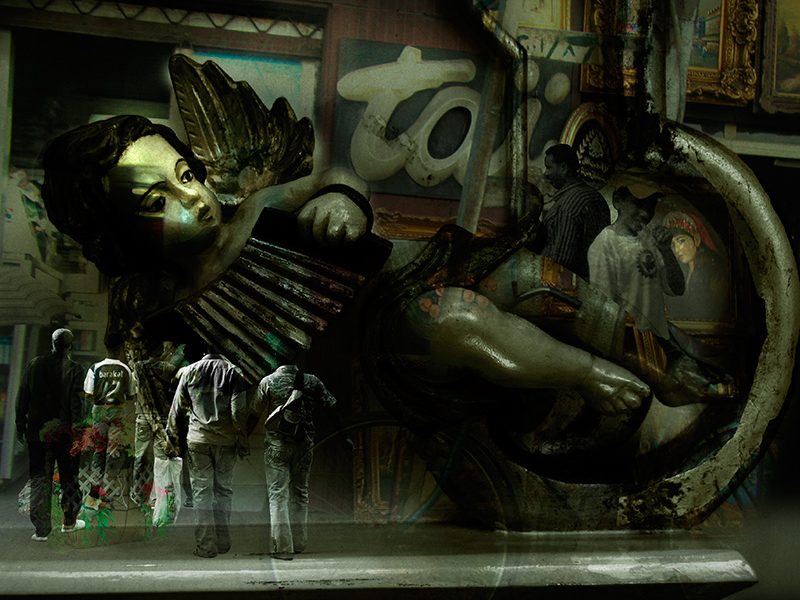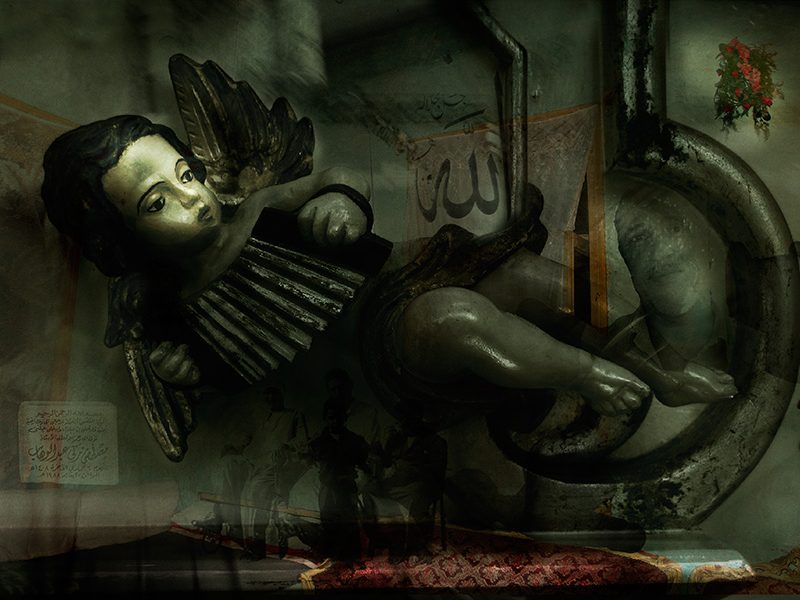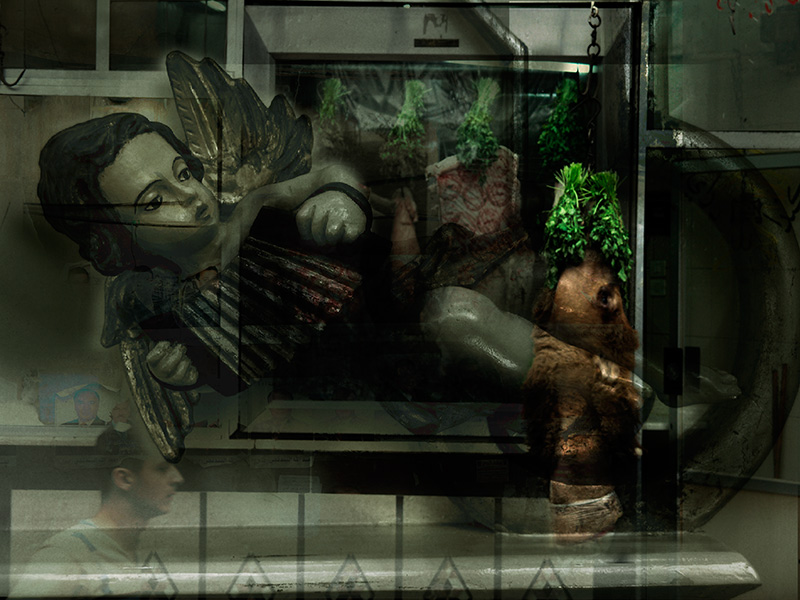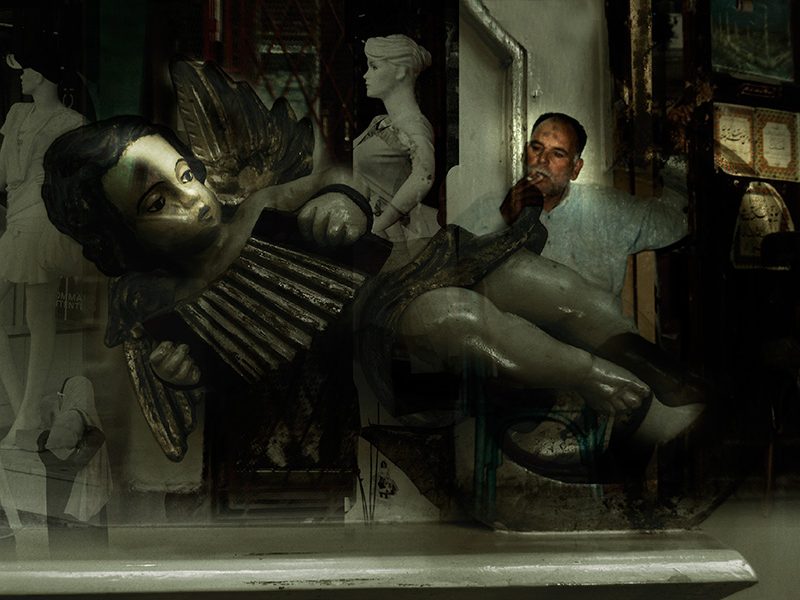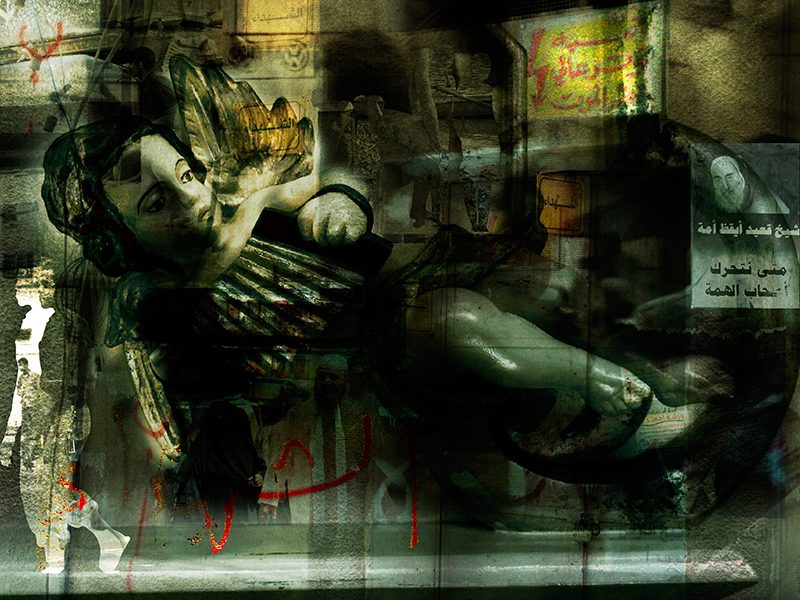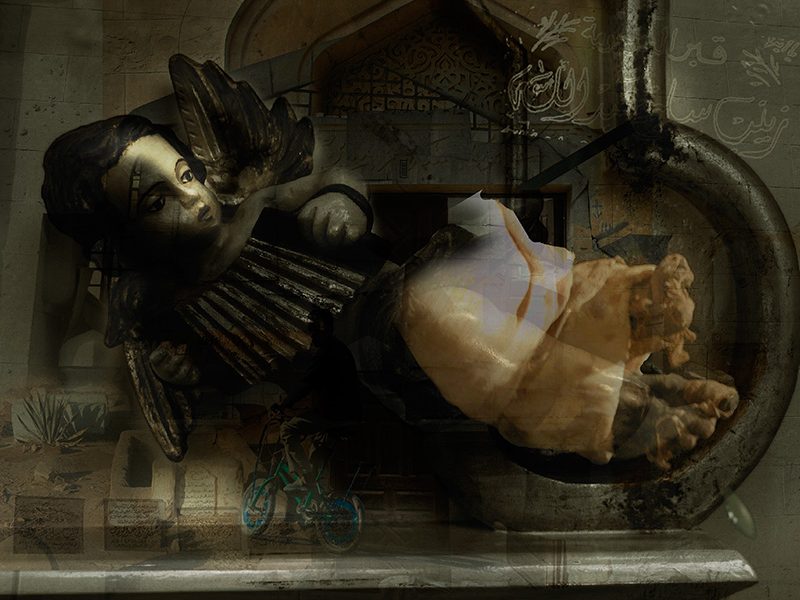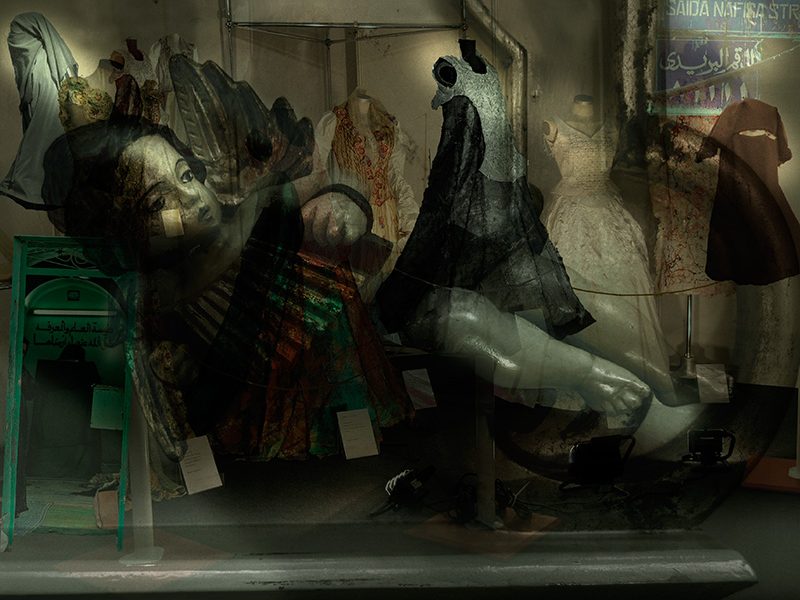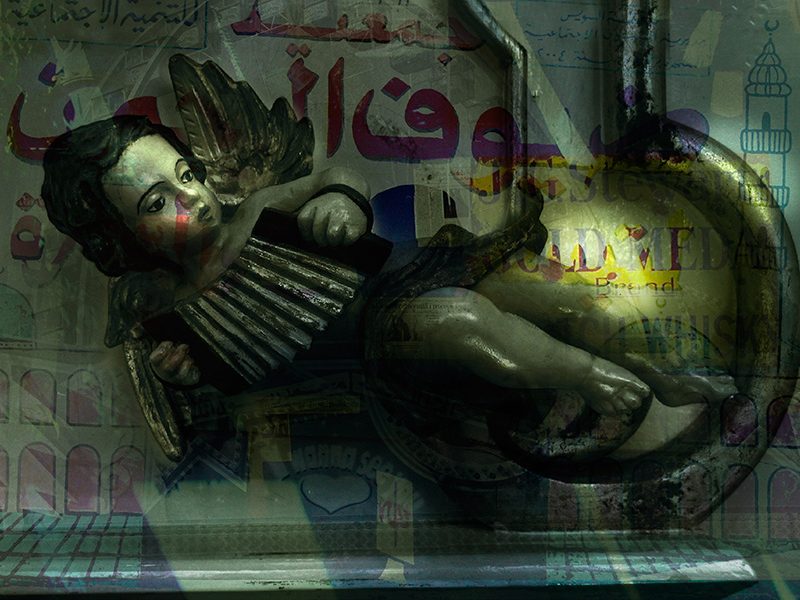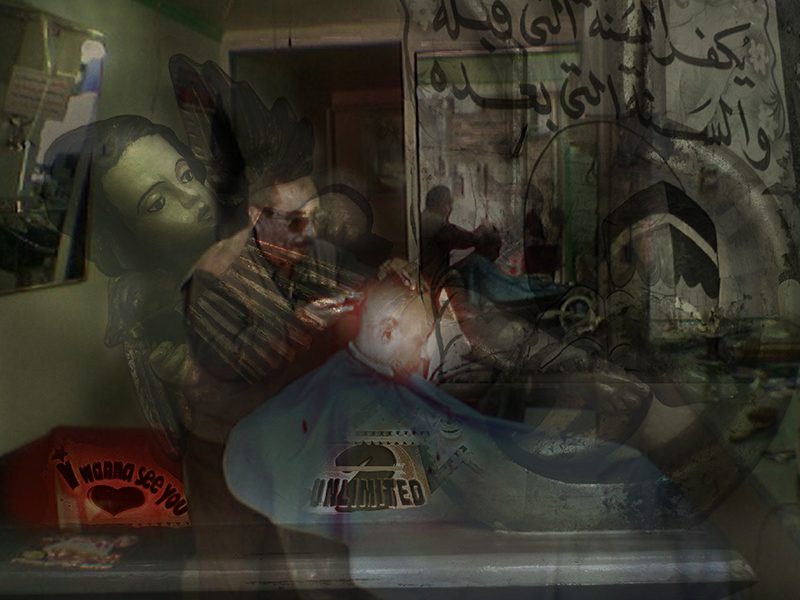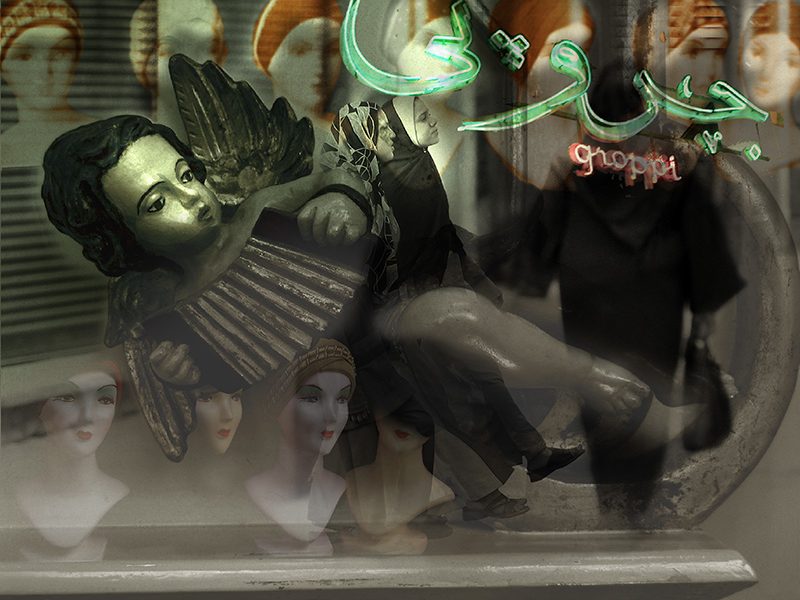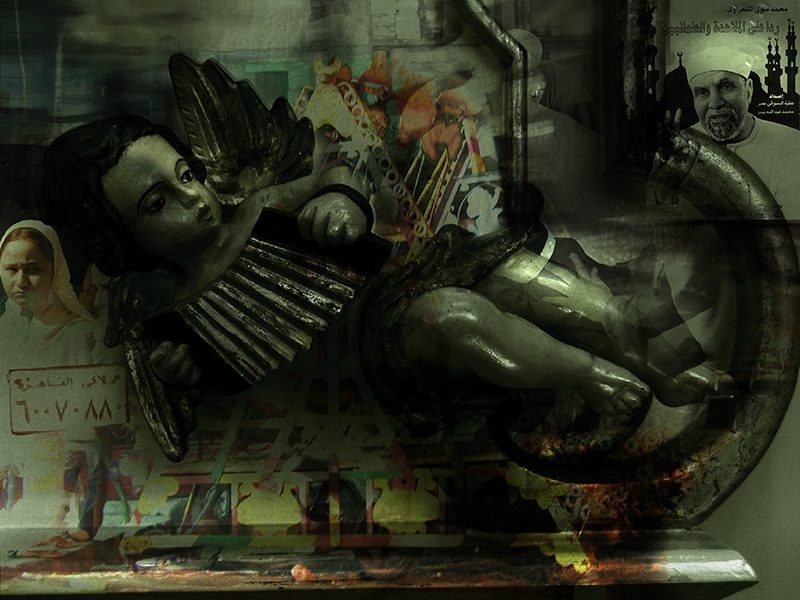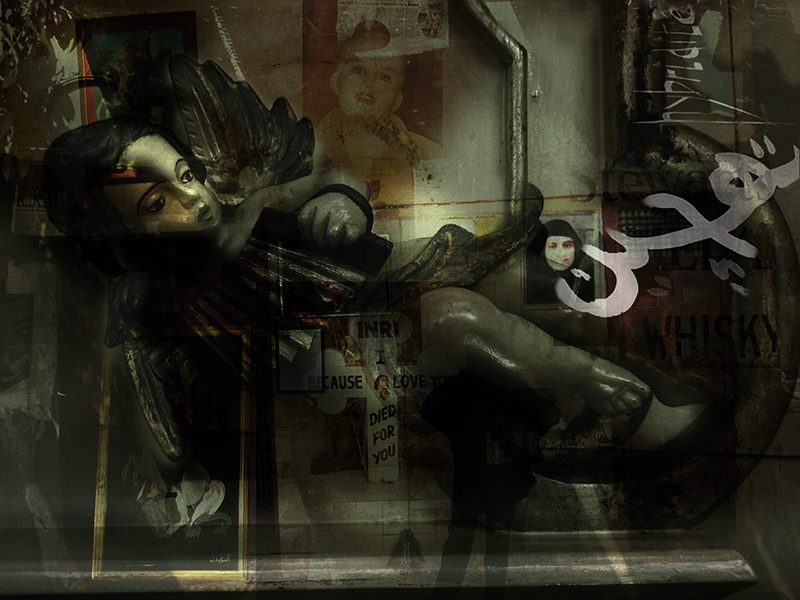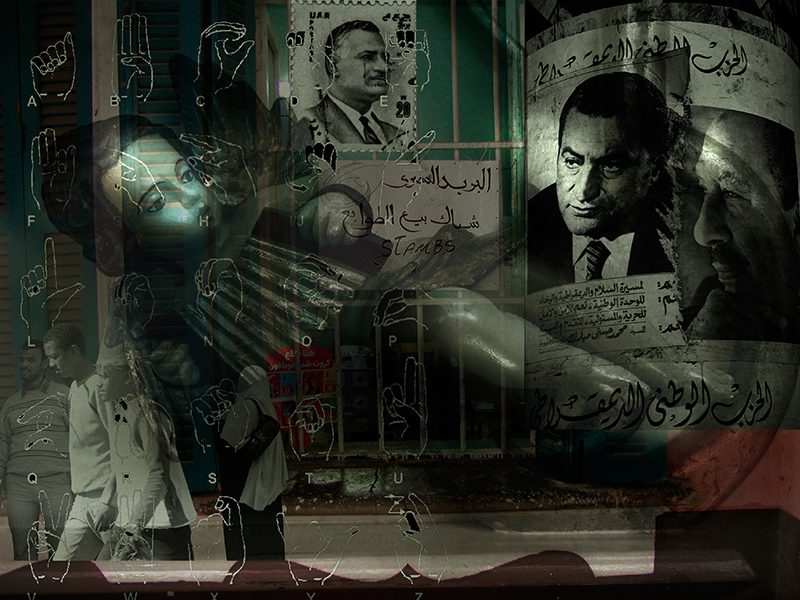Occidentalism
“Where are you, my angel? We miss you today, accompanying us in the East.”
An idea that was brought to life through my belief that Western influence in our country has become a reality. In the future, some Arab intelligence will gladly be described as significantly Western. The choice of the Baroque Angel to give meaning to the figure of a pudgy baby found traditionally in Italian Renaissance art alongside the accordion, used as a fundamental religious symbol encompassing Islam, Christianity, and Judaism. The Egyptian Baroque Angel takes the role of a messenger of religious communications, the protector of the human spirit. It is the intermediary between the physical and the spiritual.
While the Egyptian Baroque Angel holds its unique position, the Angel in the East remains the same as that of the West, a flying cherub in the sky above us. He is the seeker of all he looks upon, whether objects or incidents, good or evil. He is the spirit, knowledgeable about the earth’s ingredients.
The meaning of the Angel remains with us in how we discuss our daily lives through stories, traditional influences, and songs in all parts of Egypt, re-making the Baroque Angel. You can see an angel flying above us playing the accordion and another sitting on the ground while holding the same musical instrument. In both cases, we feel his presence, his thoughts that surround us, but always from a distance; he is not involved in our events and prefers to leave us to resolve our disagreements.
The ideal key to communication is to create a character able to build barriers, as does the Egyptian Baroque Angel, which still perplexes me, unlike the Western Angel I know and admittedly love. Similarly to the new Mcdonald’s slogan, he is only attracted to incidents that grab his attention and refuses to communicate with us in a way that is different from his method of communication. This Angel lives amongst us as an Egyptian, reminding us of his First World, Western, developed, and civilized world roots, all the while with the ability to communicate and introduce the ‘Other.’
What’s clear to me today is that it is possible to find a fusion combining the traditional Western and Eastern angels, as the role of the ancient Western Angel -to us, at least only encompasses the introduction of assistance and keeping watch. This new ‘fusion’ angel allows us to be reborn, take the lead, and explain what the West has written about us in the past, rewrite wrongly recorded history, thus righting wrongs, a cause the Egyptian Baroque Angel champions.
Has the time come for us to have a chance to write our events/histories by ourselves and correct what we have studied and were brought up to believe at school and university? Tomorrow, will the West admit we can create a character- the Egyptian Baroque Angel- a fusion that includes both cultures and beliefs in the language of communication?
First Work: The Group of 20 Angels
The flying Angel appears to be a passive watcher taking the role of a viewer to events, the witness of our Arab society flying past human beings and crossing their surroundings without being involved in their conversations. Will he record the past for reasons we do not yet know, or is it just his curiosity that drives him? He is a worldly onlooker, different from traditional behaviors, who does not allow anything to pass by unnoticed. The Angel flies without us sensing his presence, observing the privatization of Egypt, and viewing our national flag of the 1960s (picture no.1).
In the streets of Cairo, the Angel watches on as vendors sell women’s lingerie as if they’re selling meat from a butcher’s shop.
He goes out again to see the Muslims prepare for the pilgrimage to Mecca.
The Angel observes the buildings and how the porters sit at the entrance protecting the residences.
He is a strange angel; he knows everything but chooses to remain silent and does not interfere with solving many of our problems. Is it because he wants us to stay independent, even though he interrupted history, that still affects us to this date? I don’t know.
Second and Third Work: Two Portraits of the Seated Angel
The Seated Angel playing the accordion appears in many colors and writings, making us feel like he’s one of us. He faces the same problems, such as overpopulation and visual pollution. As for the color of his skin, he dramatically resembles the habitants of El Mansoura, who are always very optimistic. This Angel is more favorable than his counterparts; he is involved in our lives, engages in them, and is involved in solving problems. We try to attract him to the depth of our problems and to feel what we feel so that he provides an atmosphere of communication between us. Our views and beliefs are approximated.
The writings and phrases here are divided into one full of humane feelings criticizing oneself sometimes in a harsh manner, and another in which he profiles incidents on the streets of Egypt with the numbers of buildings, street names, voting flyers, and posted ads. The icons appear above or behind all the written phrases to explain the unstable environment of the streets today, which includes contradictions filled with indications of the gap between the East and West, describing the exciting situations that go on in our daily lives.

